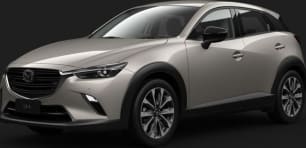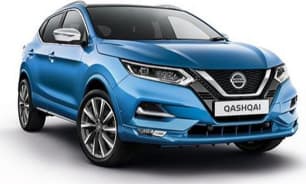From launch, Nissan will offer four grades, all with petrol front-wheel drive powertrains. There’s no longer a price-leading manual base variant, and the petrol-electric ePower variants are still to come in 2023, although timing is unclear.
Four grades are available - the base ST, the ST+, ST-L and top-spec Ti.
The ST starts the range at $33,890 before on-road costs, which is over $3000 more than the old model. The lack of a manual means no more sub-$30,000 Qashqai.
The ST+ is about $5000 more than the old model at $37,890, while the ST-L has gone up by $7500 to $42,190. The range-topping Ti now costs $47,390, which is a staggering $8300 more than the equivalent outgoing variant.
This pricing moves Nissan out of the cheap and cheerful end of the small-SUV segment occupied by the likes of the Mitsubishi ASX and MG ZS. It’s now in the mix with the Mazda CX-30, Subaru XV and the Toyota Corolla Cross.
As one would hope given the repositioning, Nissan has significantly increased the standard equipment for the new model.
As well as the new safety gear (see ‘Safety’ section below), other features in the ST include 17-inch alloy wheels, an 8.0-inch touchscreen with wired Apple CarPlay and Android Auto, a 7.0-inch digital instrument cluster, heated and auto-folding exterior mirrors, auto LED headlights, auto stop-start, and keyless entry and start.
The ST+ includes a larger 12.3-inch multimedia display with sat-nav and wireless Apple CarPlay, a surround-view monitor, rain-sensing wipers, LED fog lights and 18-inch alloys.
ST-L grades gain 19-inch alloys, tinted windows, a heated leather steering wheel, power adjustable driver’s seat, heated front seats, dual-zone automatic climate control, adaptive LED headlights with an anti-dazzle function, wireless charging, auto dimming rear-view mirrors, roof rails and more.
The flagship Ti features quilted leather-accented seats with a massage function for the front seats, driver seat memory function, panoramic sunroof, a 10.8-inch head-up display, 12.3-inch digital instrument cluster, a hands-free power tailgate, 10-speaker Bose audio system, the handy ‘Divide N Hide’ boot storage system, and an auto parking system.
Given the big price hike and the fact that some models have a digital instrument cluster as standard, Nissan could have included the larger multimedia set-up with wireless Apple CarPlay and sat-nav in the base ST. But the rest of the range has a healthy amount of gear.





















































 copy.png)




.png)








